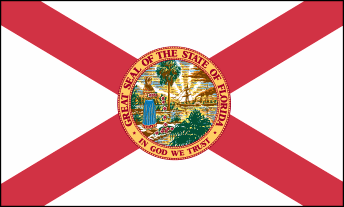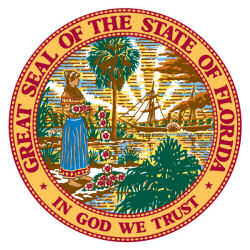

Old Glory
Our flag carries American ideas, American history and American feelings. It is not a painted rag. It is a whole national history. It is the Constitution. It is the Government. It is the emblem of the sovereignty of the people. It is the NATION.Unlike other countries, America only has two national symbols, the bald eagle and the American flag. While the bald eagle is internationally recognized, the American flag is a symbol known worldwide. The flag has been the inspiration for holidays, songs, poems, books, artwork and more. It has been used to show nationalism, rebellion and everything in between. The flag is so important that its history tells the story of America itself.

The Culpepper Minutemen
By Matthew Robinson
14 Jun 2000
CNSNews.com
and the Pittsburgh Tribune-Review.
Christopher
Gadsden's face and name may not be immortalized on any bill or coin, but this
firebrand designed a symbol which, even through the swirling mists of time, is a
reminder of the birth of the nation and the spirit that carried it to freedom.
June 14 is Flag Day. On that day, of course, we remember the Stars and Stripes
and the men who fought under that banner for freedom. Gadsden gave us another
great flag, one that flew prominently during the American Revolution, under
which many men fought and died. Gadsden's was the blazing yellow banner that
sports the ominous coiled snake and revolutionary warning, "Don't Tread on Me."
Today we don't take the time as we once did to remember those iron men who
fought the Revolution. And, worse, we seem to have forgotten the principles,
energy, and sacrifice they poured into defending freedom and the rule of law.
South Carolina's Christopher Gadsden is as much a symbol of the spirit of the
American Revolution as his flag. When Parliament passed the Stamp Act in 1765,
Gadsden helped rally opposition to that oppressive law. He argued that taxation
without representation in Parliament violated the most basic laws of the English
constitution and the natural rights of citizens.
The Stamp Act, like many of the attempts to control the colonies, would set an
unlawful precedent. The taxes on tea, trade and even paper were modest. The real
problem, the revolutionaries understood, is that the Stamp Act laid the
groundwork for the unlimited and unrepresentative expansion of government. It
was the thin edge of the wedge.
As John Dickinson wrote, "If Parliament succeeds in this attempt, other statutes
will impose other duties... and thus Parliament will levy upon us such sums of
money as they choose to take without any other limitation than their pleasure."
Gadsden was a man of principle who understood that government, unless held in
check, grows slowly and inexorably. And a government that has no limits, no
constitutionally drawn boundaries, soon becomes the master and the citizens
become heavily-taxed workers little more than slaves. Without
representation--the ability to fight for their interests--the colonies would be
subject to the whim and will of politicians ever in search of more revenue and
swag to grant the "court locusts" who buzz around institutions of power
expecting a handout.
When the Stamp Act was passed the British envoy who was set to enforce the new
law tried to land in Charleston. But Gadsden led the Sons of Liberty against the
tax-collecting functionary. The patriots would not let his ship anchor to
enforce the illegal act. Then, the captain of the British ship turned back
through the mouth of the Charleston harbor to anchor at Fort Johnson.
The Sons of Liberty, no doubt alcohol-fueled and intoxicated with raucous songs
of their victory, heard of this and decided to show Parliament just how much
they hated oppressive taxes. They traveled to the fort, took it over, and aimed
the British guns at the Stamp Act collector's ship. Outmatched and obviously
outgunned, the captain set to sea never to return. Gadsden and his men then went
home. Through legal channels, the patriots continued their resistance to the
Stamp Act and eventually had it overturned.
Eight years later, America was in full rebellion against British rule, which had
become more capricious and still threatened unjust and burdensome taxation. It
was then that Gadsden became a colonel in the Revolutionary Army and presented
his unique ensign as the flag of the Cause.
The coiled snake might seem a strange symbol today. But it was and is effective.
No American who ever sees it forgets -- and that's just the kind of message the
revolutionaries wanted to send.
For those early Americans, the rattlesnake had special significance. Like
liberty, the rattler was found only in America. But that wasn't all. That wily
serpent was usually just a harmless, humble creature. But aroused, angered, and
prodded, first it warned with violent rattle then it struck with a deadly bite.
Gadsden emphasized this by printing the legend "Don't Tread On Me" on his flag.
The words swept the nation. It became the banner of minutemen militias. The
Culpeper Minutemen chose the coiled snake ready to strike and the words from
Gadsden's flag, but then raised another defiant fist at England by adding the
words: "Liberty or Death."
At sea, the first flag of the Continental Navy carried Gadsden's warning, this
time with a sea snake slithering across the 13 red-and-white stripes.
Early Americans saw the tremendous opportunities of a land born of liberty where
men were free to innovate, invent and explore. They could reap the rewards of
freedom without government meddling and were safe because they answered to God,
family and their local communities.
Most of all, those early Americans understood that liberty is fragile. To give
any distant body of elites the power to tax and spend to stay in power promises
corruption and a Leviathan government more interested in concentrating power for
itself than in protecting the rights of its citizens.
Flag Day may be about the Stars and Stripes, a banner that symbolizes freedom
and justice to Americans and the world. But Gadsden and his flag are a still a
symbol that liberty needs friends who can fight for the rule of law and
principle for the good of the generations to come.
Matthew Robinson is the 1999 Phillips Foundation Journalism Fellow and an
adjunct fellow of the Claremont Institute.

Although Benjamin Franklin helped create the American rattlesnake symbol, his name isn't generally attached to the rattlesnake flag. The yellow "don't tread on me" standard is usually called a Gadsden flag, or less commonly, a Hopkins flag.
These two individuals were mulling about Philadelphia at the same time, making their own important contributions to American history and the history of the rattlesnake flag.
Christopher Gadsden was an American patriot if ever there was one. He led Sons of Liberty in South Carolina starting in 1765, and was later made a colonel in the Continental Army. In 1775 he was in Philadelphia representing his home state in the Continental Congress. He was also one of three members of the Marine Committee who decided to outfit and man the Alfred and its sister ships.
Gadsden and Congress chose a Rhode Island man, Esek Hopkins, as the commander-in-chief of the Navy. The flag that Hopkins used as his personal standard on the Alfred is the one we would now recognize. It's likely that John Paul Jones, as the first lieutenant on the Alfred, ran it up the gaff.
It's generally accepted that Hopkins' flag was presented to him by Christopher Gadsden, who felt it was especially important for the commodore to have a distinctive personal standard. Gadsden also presented a copy of this flag to his state legislature in Charleston. This is recorded in the South Carolina congressional journals:

The flag that I created by combining the best attributes of the Culpeper and the Gadsden Flags.

From http://www.SaveOurGuns.Com

 |
| [ LARGE PRINT [ LARGER PRINT ] [ COLOR ME ] |
Reminiscent of Alabama's State Flag and the red "X" of the Confederate States of America, the Florida State Flag displays two diagonal red bars on a white field. The official state specifications indicate:
The State Flag shall conform with standard commercial sizes and be of the following portions and descriptions: "The seal of the state, in diameter one-half the hoist, shall occupy the center of a white ground. Red bars, in width one-fifth the hoist, shall extend from each corner towards the center, to the outer rim of the seal."
The Great Seal of the State of Florida, at the intersection of the red diagonal bars, features a Native American Seminole woman scattering flowers, a steamboat, a cabbage palmetto tree and a brilliant sun. Florida is thusly represented as the land of sunshine, flowers, palm trees, rivers and lakes... "la Florida"
The following information was excerpted from The 2006 Florida Statutes, Title 4, Chapter 15.
TITLE IV. EXECUTIVE BRANCH.
CHAPTER 15. SECRETARY OF STATE.
15.012 State flag.--The state flag shall conform with standard commercial sizes and be of the following proportions and description: The seal of the state, in diameter one-half the hoist, shall occupy the center of a white ground. Red bars, in width one-fifth the hoist, shall extend from each corner toward the center, to the outer rim of the seal.
History.--s. 2, ch. 70-300.
15.02 Custodian of state flag; state papers; state laws and legislative documents.--The Department of State shall have custody of the state flag; of all books, papers, files, and documents belonging to the office of Secretary of State; and of the laws of the state and books, papers, journals, and documents of the Legislature.
History.--s. 3, ch. 1, 1845; RS 74; GS 75; RGS 89; CGL 111; s. 2, ch. 28086, 1953; ss. 10, 35, ch. 69-106.
Source: The Florida Legislature, The 2006 Florida Statutes, (http://www.leg.state.fl.us/index.cfm?Mode=View%20Statutes&Submenu=1&Tab=statutes), July 7, 2007.
Source: Florida Department of State, Florida's Historic Flags: State Flag, Present, (http://www.flheritage.com/facts/symbols/flag.cfm?page=1&id=1), July 7, 2007.
Source:
Flags of the Fifty States and Their Incredible Histories: The Complete Guide to America's Most Powerful Symbols by Randy Howe. The Lyons Press; First edition edition (November 1, 2002).
Source:
State Names, Seals, Flags and Symbols: A Historical Guide Third Edition, Revised and Expanded by Benjamin F. Shearer and Barbara S. Shearer. Greenwood Press; 3 Sub edition (October 30, 2001).
Source:
State Names, Flags, Seals, Songs, Birds, Flowers, and Other Symbols by George Earlie Shankle. Reprint Services Corp; Revised edition (June 1971).
 | Look closer |
Several changes have occurred on the seal over the years, although the basic design has been maintained. The Indian woman has changed her clothing and taken off her feathered headdress (only male Seminoles wore headdresses) so that she is now a more authentic Seminole Indian. A mountain in the background has been flattened (Florida has no mountains). The steamboat has been repaired a few times. And a sabal palm has been transplanted in place of the original cocoa tree to reflect the state's adoption of the sabal palmetto palm as the official state tree in 1953.
The latest revisions took place in 1985 and this version of the Great Seal of the State of Florida appears to have been generally accepted as the definitive version.
Florida State Statute.
Email me at tombstone@bellsouth.net
Sincerely,
Charles "Chuck" Manetta